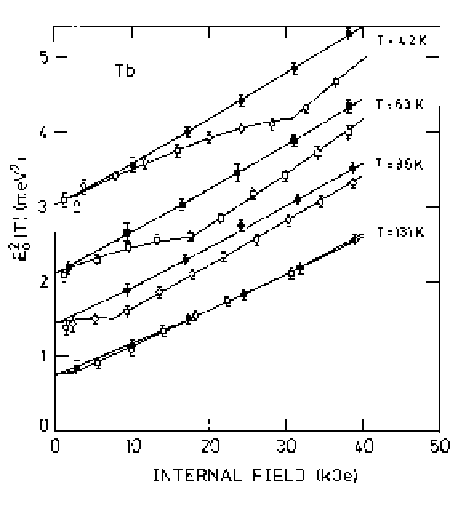Environmental Engineering Reference
In-Depth Information
Fig. 5.4.
The dependence of the square of the magnon energy gap
in Tb on the internal magnetic field. Open symbols represent results
for the field in the hard direction, and closed symbols are for the easy
direction. The non-zero value of the gap at the critical field, which just
turns the moments into the hard direction, is due to the constant-strain
contribution Λ
γ
. The full lines are least-squares fits of the theoretical ex-
pressions for the energy gap, given in the text, to the experimental results.
latter. The basal-plane anisotropies, as determined from the critical
field
H
c
and the magnetoelastic
γ
-strain parameters, are well established
by bulk measurements. Here
P
0
(
) agrees, within the small combined
uncertainties, with that derived from (5
.
4
.
22
c
) and (5.4.11), both in
magnitude and temperature dependence. On the other hand, the small
parameter
P
6
(
−
−
) differs from the static value, so that
gµ
B
H
c
+8
c
γ
CA/
(
Jσ
)
δ
6
(
−
)
≡
P
6
(
−
)
−
(5
.
4
.
23
a
)
is found to be non-zero. A part of this discrepancy may be explained by
a twelve-fold anisotropy term, but this would also affect
P
0
(
), and is
expected to decrease more rapidly with increasing temperature than the
experiments indicate. Within the accuracy of the experimental results,
the non-zero value of
δ
6
(
−
) is the only indication of an additional renor-
malization of the spin-wave energy gap, compared with that derived
from the second derivatives of the free energy.
−

Search WWH ::

Custom Search